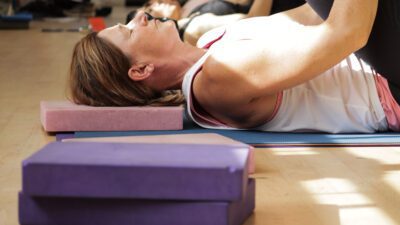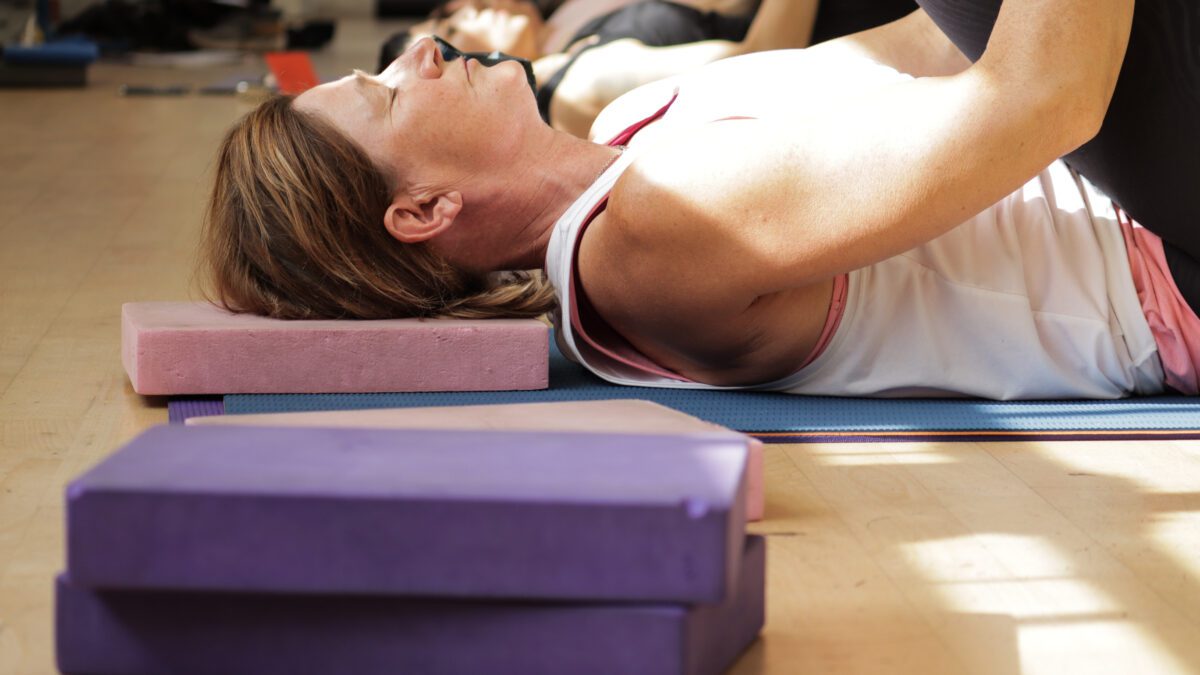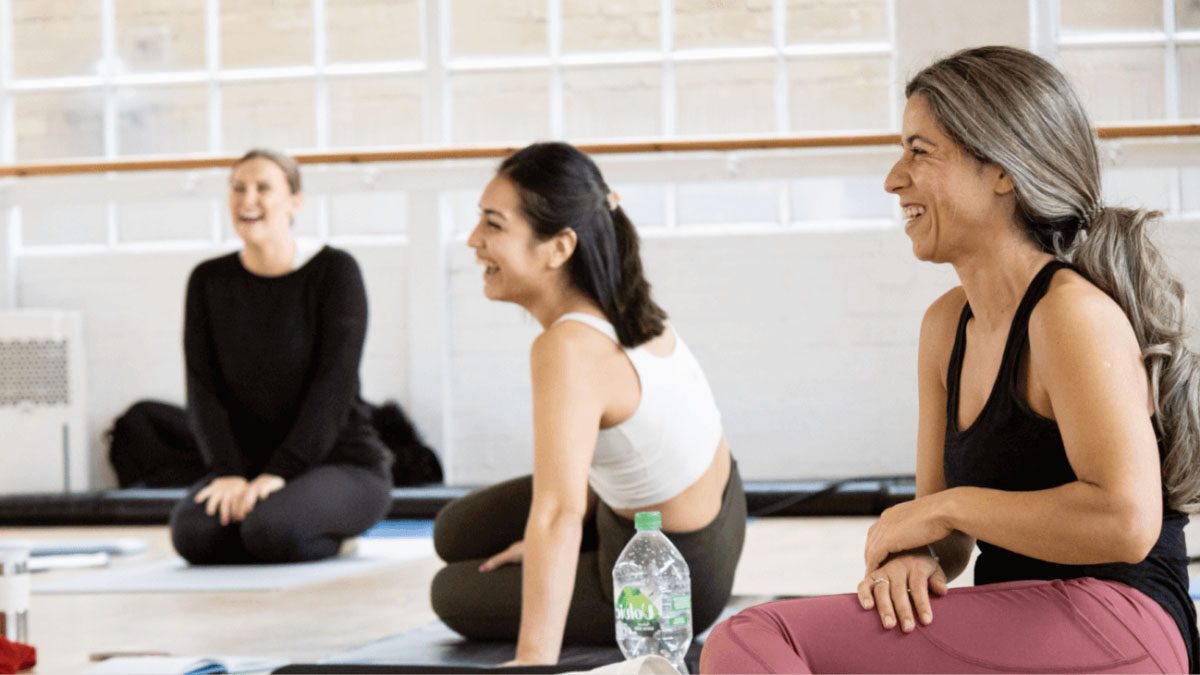What is Mat Pilates?
Mat Pilates is a system of 34 exercises designed to work the body in equilibrium through mind and body connection. The exercises will improve mobility, stability, and flexibility with an emphasis on building strength throughout the entire body. The original 34 Pilates movements can be adapted to support safe and effective exercise, suitable for all fitness and ability levels, meaning that everyone can reap the benefits of a Pilates workout and enjoy this wonderfully versatile method. Pilates exercises can be practised anywhere, all you need is some space to move safely and a mat to exercise on!
There’s a well-known saying that ‘Pilates is easy until you do it correctly!’. What this implies, is that if you fully embrace the fundamentals of Pilates and take note of precision, quality, and control when executing every single movement, then even some of the basic Pilates moves will be quite a challenge, and far from easy.
In this article, we will explore 10 exercises suitable for beginners. The original movements in Pilates are complex and require a great deal of strength. By starting from the foundations and learning how to perfect alignment and control, you will gradually develop your core strength, mobility, and flexibility, supporting your progress to master the exercises at a more challenging level with good technique.
Always complete a thorough warm-up before progressing into the main phase exercises, mobilising all of the joints with dynamic movements such as arm circles, knee bends, and side bends.
Movement 1 – The One Hundred
This exercise will help to develop your core strength. The One Hundred exercise is one of the most important beginner exercises, as many other Pilates movements progress from this base level position. You will notice this as we move through the exercises.
- Set your body up, lying on your back with your knees bent and the feet hip-width apart
- The knees are in line with the hips and the ankles, and the arms resting by the sides of the body
- Imagine a piece of string pulling you from the back of your head, elongating your neck, sliding the shoulder blades down the centre of your back, with your pelvis remaining central
- Engage your core, inhale to prepare, and exhale to raise one leg into a tabletop position. The knee should be directly over the hip, and the shin parallel to the floor
- Stabilise the pelvis and remain subtly connected through your centre
- Hold this for 5-6 breaths and then change legs

Movement 2 – The Shoulder Bridge
This exercise will mobilise the lumbar spine and develop your core strength.
- Set up your body, lying on your back with your knees bent and your feet hip-width apart. Draw the heels of your feet a little closer to your body
- Commence from a neutral spine with the arms resting by the sides of the body
- Inhale and do a pelvic tilt, exhale, and peel the spine from the mat all the way to a bridge position
- Inhale and hold the position
- Exhale and return down, articulating the spine vertebra by vertebra
- Find a neutral alignment before repeating it again
- Repeat 10 times with flow and control

Movement 3 – One Leg Stretch
This exercise progresses from the basic level of The One Hundred position and challenges your core strength by extending the leg away from the body whilst maintaining neutral alignment.
- Set your body up, lying on your back with your knees bent and the feet hip-width apart
- The knees are in line with the hips and the ankles, and the arms resting by the sides of the body
- Imagine a piece of string pulling you from the back of your head, elongating your neck, sliding the shoulder blades down the centre of your back, with your pelvis remaining central
- Engage your core, inhale to prepare, exhale and raise one leg to a tabletop position. The knee should be directly over the hip, and the shin parallel to the floor
- Inhale to prepare, then exhale to extend at the knee, stretching the leg out away from the body. Imagine trying to turn a light switch off with your toes
- Inhale and return the leg to the tabletop before controlling it down to the floor.
- Repeat alternate legs 6-8 times

Movement 4 – Static Side Kick
This exercise will develop strength in your core and aid balance and control, improving proprioception (your body’s ability to sense its location, movement and actions). You may find it more comfortable to have your head resting on a block with your arms forwards, depending on your shoulder joint mobility.
- From a side-lying position, align your body so that the shoulders and hips are stacked and you are in a straight line. Your head is resting onto your bottom arm, with the palm open to the sky, and use the hand of the top arm to rest lightly in front for support
- Engage through your core and lift the waist from the ground
- Inhale to prepare and exhale to raise both legs from the ground
- Hold this position for 6-8 breaths before controlling the legs back down

Movement 5 – Box Swimming
This exercise will help to develop your core and lumbar strength, and strength the shoulder girdle.
- Adopt a four-point kneeling position, with the shoulders in line with the wrists and the hips in line with the knees
- Lengthen through the spine and neck, and slide the shoulder blades down the centre of the back
- Engage through the core as you exhale and slide one leg away from you, keeping the foot in contact with the floor
- Inhale and draw the knee back underneath the hip, keeping the foot in contact with the floor

Movement 6 – Swan Drive
This exercise will increase mobility and strength in your upper back. A great exercise if you spend a lot of time driving or at a desk.
- Set your body up, lying on your front with arms out to the sides, bent at a 90-degree angle at the elbow
- Engage your core and slide the shoulder blades down the centre of the back
- Inhale to prepare and exhale to lengthen forwards and lift the upper body from the mat
- Keep correct neck alignment throughout
- Inhale and return to the floor

Movement 7 – Spine Twist
This exercise will increase the mobility in your upper back, fantastic to help improve your posture.
- Commence seated with the legs crossed, or in front of you. You may need to sit on a clock or cushion if you feel uncomfortable in this position
- Lengthen through the spine, imagine a golden thread pulling you to the sky, and relax the shoulders down the back
- Thumbs come into the chest and fingertips beneath the chin
- Inhale to prepare and exhale to rotate through the torso, keeping the eye-line lifted, scanning the horizon
- Inhale to return with fluidity to the start position before rotating to the other side
- Repeat 5 times on each side

Movement 8 – The Roll-Up
An excellent exercise to strengthen the core and regain mobility through the spine.
- From a seated position bend the knees, keeping them in line with the hips and ankles
- Lengthen through the spine, with the hands resting on the outside of the thighs
- Inhale to initiate a pelvic tilt, exhale to curl the spine into a C position, and roll back to where you can maintain the control
- Allowing the arms to extend by the sides of the body
- Inhale at the furthest point, maintaining core engagement, and then exhale to return the journey to the start
- Repeat 6-8 time

Movement 9 – Arm circles
This movement is not only good for your shoulder mobility and core strength but will also develop your motor skills. The challenge of circling the arms whilst maintaining the accurate position of the leg requires coordination. You can start with small circles and progress the size once control is established. This exercise will prepare for the Pilates exercise ‘Double Leg Stretch’, eventually adding in the stretching of the legs once your core strength and coordination have improved.
- Set up your body, as in The One Hundred exercise
- Engage your core, inhale to prepare, exhale and raise one leg to tabletop and hold this position
- Inhale and float your arms up towards the ceiling, exhale and circle the arms over the head and around to the sides, inhale bringing the arms back through the centre performing full large circles
- Maintain neutral spine and pelvic alignment. Keep the ribs connected towards the hips
- Keep your legs still and in correct alignment, knee over the hip and shin parallel to the floor whilst circling the arms
- Complete 5 circles in one direction and 5 in the other, then change legs.

Movement 10 – One Leg Circle
The One Leg Circle promotes hip mobility. Again, starting from The One Hundred position – so you can now see the importance of mastering this exercise first. You can start with small circles, and once you can maintain control of the movement you can progress in size.
- Set your body up, as in The One Hundred exercise
- Inhale to prepare, exhale and float one leg to tabletop
- Using your fingertip as a guide, exhale and start to circle the leg away from the body, completing a full circle towards the midline of the body.
- Follow the flow of your breath, drawing circles the size of dinner plates
- Ensure the pelvis remains stable and level, engaging subtly through your centre
- Complete 5 circles in one direction and 5 in the other, before changing legs















